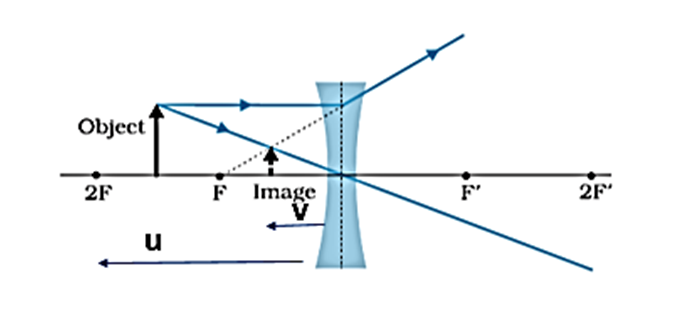Question
Question: An object placed \(50cm\) from a lens produces a virtual image at a distance of \(10cm\) in front of...
An object placed 50cm from a lens produces a virtual image at a distance of 10cm in front of the lens. Draw a diagram in order to show the formation of the image and calculate the focal length of the lens.
Solution
The distance from the lens to the focal point is known as the focal length. For a converging lens also known as convex lens, the focal length is always positive, while for a diverging lens or concave lens it always has negative focal lengths.
Complete answer:
The focal length of a lens is dependent on the radii of curvature of its surfaces and on the index of refraction of the material the lens is produced from. As the focal length is the characteristics of a lens and colour of light is dependent on wavelength. Therefore the focal length of the lens is independent of the colour, wavelength and the frequency of the light which is entering through the lens.
Now as per the question, the distance of object from the lens is,
u=−50cm
And also the distance of the image from the lens is given as,
v=−10cm
As we all know the focal length of a lens is given by the equation,
f1=v1−u1
Substituting the values in the given equation will give,
f1=−101−−501
Simplifying,
f=−12.5cm
As the focal length is obtained as negative, the lens is found to be a concave lens. So the ray diagram will look like this,

Note:
The focal length of a lens is dependent on the medium surrounded. The reason for this phenomenon is that the angle of refraction of a lens is dependable on the indices of refraction of the medium of the lens and the incoming medium and the difference in their refractive indices.
